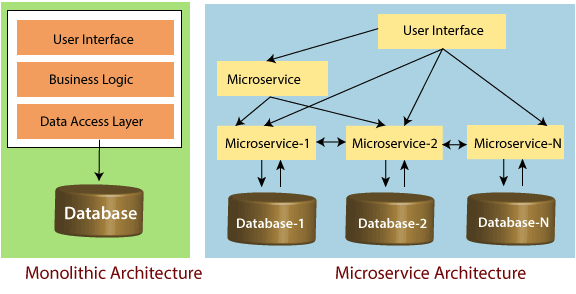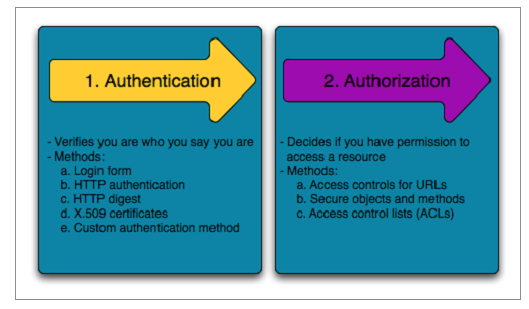Introduction to Spring Boot - part 2
| Hard Prerequisites |
|
Microservices
In 2005 Dr Peter Rogers introduced the term micro-web-service introducing the concept of loose-coupled services interacting with one another. It wasn’t until 2011 where people who were exploring this architecture starting sharing their ideas and thought and thus increasing the spread and popularity.
So what is Microservice Architecture
From Wikipedia
a variant of the service-oriented architecture (SOA) structural style— that arranges an application as a collection of loosely coupled services. In a microservices architecture, services are fine-grained and the protocols are lightweight
In simple terms according to Sam Newman “Microservices are the small services that work together”
But there are fundamental rules that need to be noted about these service which are:
Single Responsibility principle: focuses on a piece of functional and only that functionality
High Cohesion Combined With Loose Coupling: able to change and deploy without affecting other services
Presenting an API: REST is common but modern transport mechanism are also valid
Unique Source of Identification: There need to be an id(e.g ApplicationID) which uniquely identifies a record of information
Data Storage Segregation: Access to data should be owned by the service
Traffic Management: Make sure service can communicate when its overloaded and can terminate calls that take long to respond
Automating The Process: Self-deploy service without any intervention (CI/CD)
Minimal Database Tables (Preferably Isolated Tables)
Constant Monitoring

Spring Boot Security
Now that we are going to create applications which can be accessed by the outside world, security becomes important because you don’t want people having access to information which they are not allowed to have.
Spring Security has an architecture that is designed to separate authentication from authorization, and has strategies and extension points for both.
Spring Security is a framework that provides authentication, authorization, and protection against common attacks. With first class support for both imperative and reactive applications, it is the de-facto standard for securing Spring-based applications.
Difference Between Authorization and Authentication

Features
Comprehensive and extensible support for both Authentication and Authorization
Protection against attacks like session fixation, clickjacking, cross site request forgery, etc
Servlet API integration
Optional integration with Spring Web MVC
you will need
dependencies {
compile "org.springframework.boot:spring-boot-starter-security"
}
@Configuration
@EnableWebSecurity
public class WebSecurityConfig extends WebSecurityConfigurerAdapter {
//override configuration
// override userDetailsService
}
With this dependencies you get a lot out of the box and it also provides basic security with little configuration. You can override some of these behaviors by using WebSecurityConfigurerAdapter
Spring Boot Caching
We live in a word where data is not so cheat and access to wifi is currently not accessible to everyone. More so we don’t have as many people using smart devices which makes using advanced technology a bit of a struggle. It is our responsibility as software developers to know these limitation so we can create software that is thoughtful. Meaning creating applications that don’t require a lot of processing power, high speed and if possible even be able to work offline. Caching is the first, no-brainer step you can take
What is Caching
Caching is a mechanism to enhance the performance of a system. It is a temporary memory that lies between the application and the persistent database. Cache memory stores recently used data items in order to reduce the number of database hits as much as possible. from
Types of caching
In-memory caching: Most frequently used cached, stored in RAM(Random Access Memory) and thus fast to access
Database caching: Databases have cache by default and this can be manipulated to show significant results
Web server caching: Caching request and responses to server at API level with the help of Reverse proxies
CDN(Content Delivery Network) caching: a CDN will reduce the load on an application origin and improve the experience of the requestor by delivering a local copy of the content from a nearby cache edge, or Point of Presence (PoP).
Spring boot Caching Annotation
@EnableCaching: It enables Spring’s annotation-driven cache management capability.
@Cacheable: It is used on the method level to let spring know that the response of the method are cacheable
@CacheEvict: It is used when we need to evict (remove) the cache previously loaded of master data
org.springframework.boot:spring-boot-starter-cache
@Service
public class StudentService
{
@Cacheable("student")
public Student getStudentByID(String id)
{
try
{
System.out.println("Going to sleep for 5 Secs.. to simulate backend call.");
Thread.sleep(1000*5);
}
catch (InterruptedException e)
{
e.printStackTrace();
}
return new Student(id,"Sajal" ,"V");
}
}
Resource
https://dzone.com/articles/9-fundamentals-to-a-successful-microservice-design
https://techbeacon.com/app-dev-testing/5-fundamentals-successful-microservice-design
https://www.javatpoint.com/advantges-and-disadvantages-of-microservices
https://www.javatpoint.com/challenges-of-microservices-architecture
https://www.marcobehler.com/guides/java-microservices-a-practical-guide
https://spring.io/guides/topicals/spring-security-architecture
https://dzone.com/articles/secure-a-spring-boot-app-with-spring-security-and
https://www.baeldung.com/spring-security-multiple-auth-providers
https://docs.spring.io/spring-security/site/docs/5.3.1.BUILD-SNAPSHOT/reference/html5/
https://www.javainuse.com/spring/sprboot_sec
https://howtodoinjava.com/spring-boot2/spring-boot-cache-example/ - Go through this tutorial
https://dzone.com/articles/introducing-amp-assimilating-caching-quick-read-fo